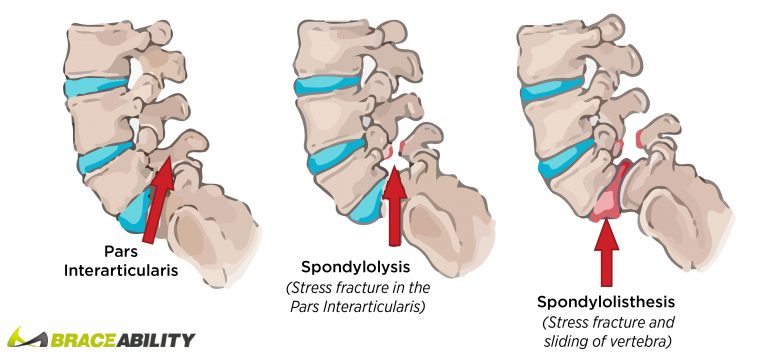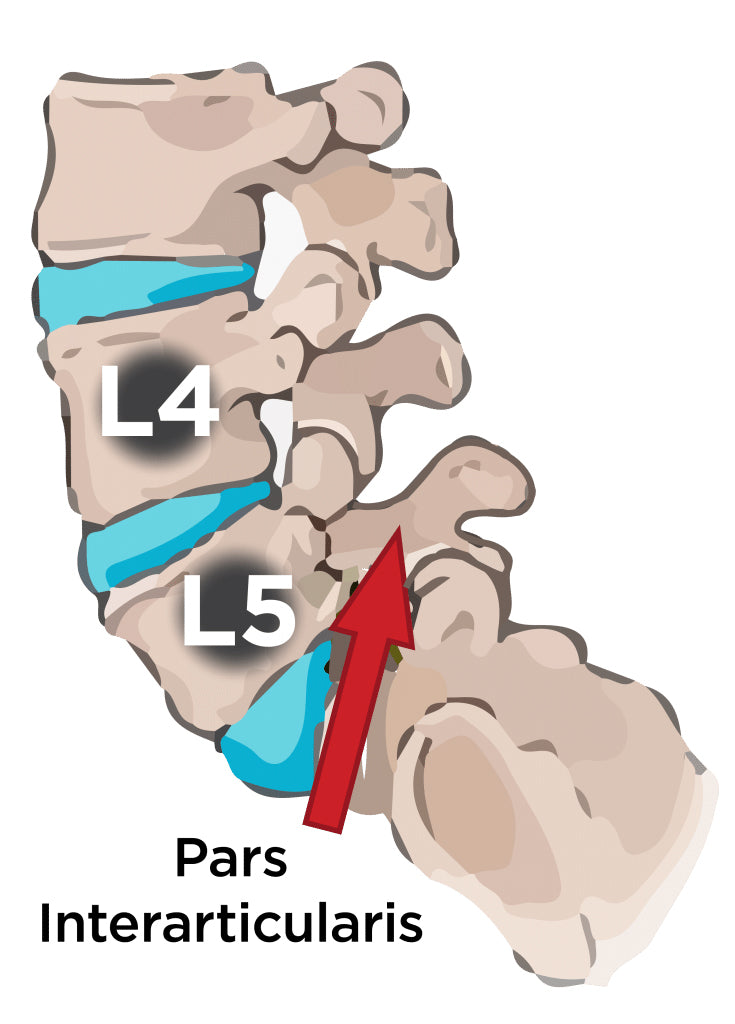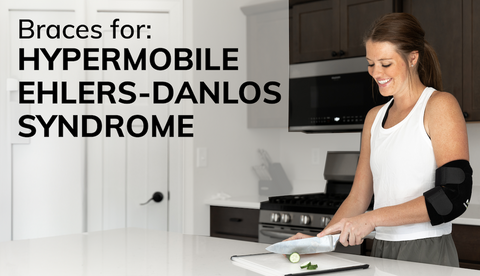How to Tell If You Have Lumbar Spondylolisthesis or Spondylolysis in Your Lower Back
 Spondylolysis and spondylolisthesis are related conditions that are a common source of low-back pain. Stress fractures in the pars interarticularis area of the vertebra are known as spondylolysis and the slide in the vertebra that can result is known as spondylolisthesis.
Spondylolysis and spondylolisthesis are related conditions that are a common source of low-back pain. Stress fractures in the pars interarticularis area of the vertebra are known as spondylolysis and the slide in the vertebra that can result is known as spondylolisthesis.
While these defects can occur anywhere in the spine, the most common location for this is in the fifth lumbar (L5) vertebra, which is located just above the sacrum, followed by in the fourth lumbar vertebra (L4), which is located just above the L5 vertebra.
Lumbar spondylolysis stress fractures can occur due to activities that put inordinate amounts of pressure on the low-back or from sports that require frequent hyperextension of the back. Growth spurts in teenagers, especially males, can also result in spondylolysis and/or spondylolisthesis.
In older adults, the source or cause of spondylolysis or lumbar spine spondylolisthesis is often related to degenerative changes in the spine due to aging or possibly trauma or some pathological disease, infection or tumor.
What Are Symptoms of Lumbar Spondylolisthesis?
 In many cases, spondylolysis or spondylolisthesis may not coincide with any symptoms or these symptoms may not appear until later in life.
In many cases, spondylolysis or spondylolisthesis may not coincide with any symptoms or these symptoms may not appear until later in life.
In instances where symptoms of spondylolysis and spondylolisthesis lumbar are present, the main one is a pain in the lower back that is similar to the discomfort you might experience with a low-back muscle strain spanning the low back.
Another common side effect of spondylolisthesis is muscle spasms in the hamstrings. The tightness of these back-of-thigh muscles can also influence your stride, causing you to shorten your stride and walk with the knees at a slight bend.
If the slide in the vertebra results in pressure on the nerves or a narrowing of the spinal canal (spinal stenosis), tingling, numbness, and weakness in the hips, buttocks or legs or even the feet may also result. Standing or walking for a long period of time can increase such symptoms.
Lumbar Spondylolisthesis Treatment
Spondylolysis and spondylolisthesis can usually be managed via conservative treatment methods. The pain associated with these conditions can be reduced by taking anti-inflammatory medications or in tougher cases with injections of anti-inflammatory steroids like cortisone into the epidural space to ease spondylolysis or spondylolisthesis lumbar spine discomfort.
A spondylolisthesis lumbar brace can also be helpful for reducing the amount of pressure the back endures and to unload some of it to the abdominal region. Some braces have added features like a massage pad or cold therapy to promote healing and the reduce painful inflammation.
Physical therapy is often incorporated into spondylolisthesis and spondylolysis lumbar pain treatment. Such exercises for lumbar spondylolisthesis focus on the strengthening and improving the flexibility of both the low-back and the abdominal muscles. Lumbar spondylolisthesis exercises may take place with or without the supervision of a physical therapist, depending upon the recommendations of a medical professional and the needs of the patient. It's advised to stay away from high contact sports or activities that placed stress on your spine to ensure you don't worsen your symptoms.
Lumbar Spondylolisthesis & Spondylolysis Surgery
But not everyone is responsive to conservative modes of treatment and if the degree of slippage for spondylolisthesis is too great, surgery may be needed to treat spondylolisthesis. Surgery usually involves fusion of the vertebrae of the spine in the problematic region and the reduction of the pressure on the spinal canal or nerves, often via a laminectomy, if applicable.
Again, a spondylolisthesis brace and physical therapy may be needed following surgery to support and stabilize the back.










